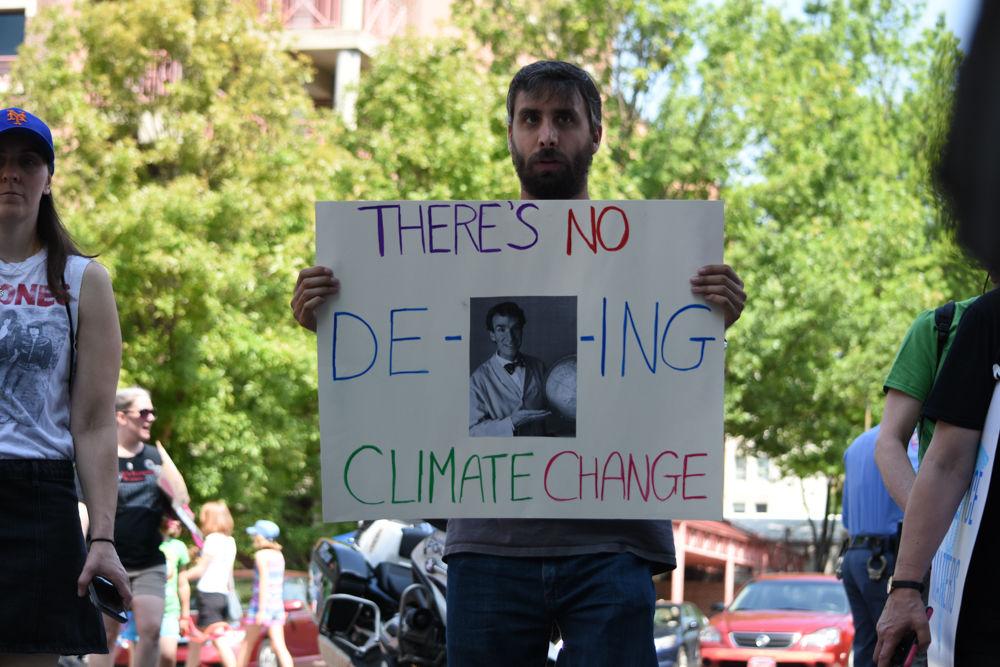On Saturday morning, I joined many protesters who filled downtown Raleigh’s streets during the March for Science. We were among the many cities in the world to hold protests for science and funding for evidence-based research on Earth Day.
The march started at Shaw University and it took approximately two hours from start to finish for all the protesters to gather for a rally in Moore Square. The turnout was impressive, with approximately 2,000 people expected to be in attendance.
As a student studying environmental science, I am somewhat more optimistic after seeing such a diverse group of people come together in the name of science.
Many scientists with lab coats walked alongside citizens, some with signs about budget cuts on their scientific research. Environmental interest groups like the Nature Conservancy and the Sierra Club also showed their support with banners and signs.
The goal of the protest was to be political, but not partisan. However, much of the rhetoric throughout the day was aimed against President Donald Trump’s policies and proposed budget cuts. These budget cuts to agencies like the EPA and National Institutes of Health impact funding for other organizations, some of which are based in the Research Triangle Park.
The protest was not loud, but the sheer number of people there spoke to the priority of the topic in their lives. I felt that there was an overall sense of exasperation among the crowd due to the fact that such an event is a necessity with our current administration’s anti-science agenda.
The process of science and policy are not necessarily compatible, since the process of science often leads to what many scientists call “uncertainty.” This term, when interpreted by policy-makers and the public reads as a lack of consensus that leads to skepticism. But in the scientific field, the term “uncertainty” leaves room for peer review and the pursuit of the absolute truth.
However, the role of science in policy-making is critical. Not to mention that scientific research makes the goal of designing optimal legal and political responses less overwhelming. Including scientific data into the regulatory process ensures with much greater certainty that the environmental problem will be addressed.
The need for science-based policy is essential in the mitigation of our generation’s biggest problem, climate change. If policymakers wait until they have a 100 percent consensus from scientists regarding climate change, it may be too late.
While our current administration is concerned with withdrawing from the Paris Climate Agreement, it should be worried about creating proactive regulations that take into account tipping points and thresholds. While this administration is planning to cut funding for agencies like the EPA, it should be concerned with climate, clean air and many of the other environmental concerns that the EPA’s budget currently addresses. For without clean air, water and a stable climate, nothing else matters.
There is a strong historic relationship between science and democracy. While in many ways as Americans we take this relationship for granted, the March for Science signifies that when this ideal is threatened, people will fight back.
A quote by Audre Lorde that was shared before the speakers came on stage summed up the event perfectly: “When we speak, we are afraid our words will not be heard or welcomed. But when we are silent, we are still afraid. So, it is better to speak.”





